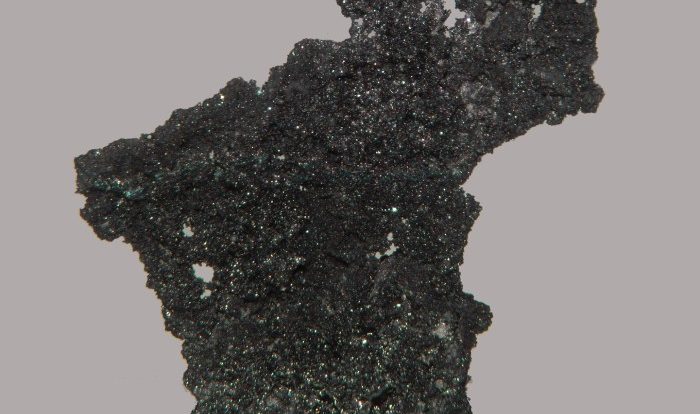The Acid and Base Calculations Worksheet provides a comprehensive overview of the fundamental concepts, types, and methods used in acid-base calculations. This guide empowers learners with the knowledge and skills to confidently solve acid-base problems, ensuring a deep understanding of this critical aspect of chemistry.
The worksheet covers a wide range of topics, including pH, acid-base reactions, titration calculations, pH calculations, buffer capacity calculations, common mistakes, and troubleshooting tips. With its clear explanations, step-by-step examples, and troubleshooting guidance, this worksheet is an invaluable resource for students, educators, and professionals seeking to master acid-base calculations.
Understanding Acid-Base Calculations
Acid-base reactions are chemical reactions that involve the transfer of protons (H+ ions) between molecules or ions. These reactions play a crucial role in various chemical and biological processes, and understanding their behavior is essential for many scientific disciplines.
pH and Its Significance
pH is a measure of the acidity or basicity of a solution. It is defined as the negative logarithm (base 10) of the molar concentration of hydrogen ions ([H+]) in the solution:
pH =
log[H+]
The pH scale ranges from 0 to 14, with 0 being the most acidic and 14 being the most basic. A pH of 7 is considered neutral.
Relationship between pH, [H+], and [OH-]
In aqueous solutions, the concentration of hydrogen ions ([H+]) is inversely related to the concentration of hydroxide ions ([OH-]):
[H+][OH-] = 10-14
This relationship is known as the ion product of water and is a fundamental property of water.
Strong and Weak Acids and Bases
Acids and bases can be classified as strong or weak based on their ability to dissociate in water:
- Strong acidsdissociate completely in water, releasing all their protons.
- Weak acidsdissociate only partially in water, releasing only a small fraction of their protons.
- Strong basesdissociate completely in water, releasing all their hydroxide ions.
- Weak basesdissociate only partially in water, releasing only a small fraction of their hydroxide ions.
Examples of strong acids include hydrochloric acid (HCl) and sulfuric acid (H2SO4), while examples of weak acids include acetic acid (CH3COOH) and carbonic acid (H2CO3). Examples of strong bases include sodium hydroxide (NaOH) and potassium hydroxide (KOH), while examples of weak bases include ammonia (NH3) and pyridine (C5H5N).
Types of Acid-Base Calculations
Acid-base calculations are a fundamental aspect of chemistry, used to determine the concentration of acids and bases in solutions. There are various types of acid-base calculations, each with its specific purpose and methodology.
Titration Calculations
Titration is a technique used to determine the concentration of an unknown acid or base by reacting it with a solution of known concentration. The steps involved in titration calculations include:
- Measuring the volume of the unknown solution.
- Adding a known volume of the titrant solution to the unknown solution until the reaction is complete (endpoint).
- Using the stoichiometry of the reaction to calculate the concentration of the unknown solution.
pH Calculations
pH calculations determine the acidity or basicity of a solution. The pH is a measure of the hydrogen ion concentration in a solution and is calculated using the following formula:
pH =
log[H+],
where [H+] is the molar concentration of hydrogen ions in the solution.
Buffer Capacity Calculations, Acid and base calculations worksheet
Buffer solutions resist changes in pH when small amounts of acid or base are added. The buffer capacity is a measure of a buffer’s ability to resist pH changes and is calculated using the following formula:
Buffer capacity = dC/dpH,
where dC is the change in concentration of the buffer components and dpH is the change in pH.
Solving Acid-Base Calculation Problems
Solving acid-base calculation problems involves using chemical equations to determine the concentrations of acids and bases in a solution. These calculations are important in various fields, such as chemistry, biology, and environmental science.
Titration Curves
Titration curves are graphs that show the change in pH of a solution as a known amount of acid or base is added. These curves can be used to determine the equivalence point, which is the point at which the moles of acid and base are equal.
To calculate the equivalence point, the following steps can be taken:
- Write the balanced chemical equation for the reaction.
- Calculate the moles of acid and base that are added to the solution.
- Use the stoichiometry of the reaction to determine the moles of acid and base that are consumed at the equivalence point.
- Calculate the volume of acid or base that is added to the solution at the equivalence point.
pH Determination
The pH of a solution is a measure of its acidity or basicity. The pH can be calculated using the following formula:
pH =
log[H+],
where [H+] is the concentration of hydrogen ions in the solution.To calculate the pH of a solution, the following steps can be taken:
- Write the balanced chemical equation for the reaction.
- Calculate the moles of acid and base that are added to the solution.
- Use the stoichiometry of the reaction to determine the moles of hydrogen ions that are produced or consumed.
- Calculate the concentration of hydrogen ions in the solution.
- Use the formula above to calculate the pH of the solution.
Buffer Capacity
Buffer capacity is a measure of a solution’s ability to resist changes in pH. Buffer capacity is calculated using the following formula:
Buffer capacity = dC/dpH,
where dC is the change in concentration of the acid or base and dpH is the change in pH.To calculate the buffer capacity of a solution, the following steps can be taken:
- Write the balanced chemical equation for the reaction.
- Calculate the moles of acid and base that are added to the solution.
- Use the stoichiometry of the reaction to determine the moles of hydrogen ions that are produced or consumed.
- Calculate the concentration of hydrogen ions in the solution.
- Calculate the buffer capacity of the solution using the formula above.
Common Mistakes and Troubleshooting
Mistakes in acid-base calculations can lead to incorrect results and misinterpretations. To avoid errors, it is essential to understand the principles of acid-base reactions and follow the steps carefully.
Common mistakes include:
- Incorrectly identifying the type of acid-base reaction.
- Using the wrong stoichiometric coefficients.
- Neglecting to account for the dissociation of water.
- Making arithmetic errors.
Troubleshooting and Avoiding Errors
To troubleshoot and avoid errors, consider the following tips:
- Double-check the type of acid-base reaction and the corresponding stoichiometry.
- Use a balanced chemical equation to ensure the stoichiometric coefficients are correct.
- Consider the dissociation of water in all calculations, especially when dealing with weak acids or bases.
- Pay attention to units and significant figures.
- Use a calculator and double-check your calculations.
Potential Errors and Solutions
| Potential Error | Solution |
|---|---|
| Incorrectly identifying the type of acid-base reaction | Refer to the definitions and characteristics of different acid-base reactions to correctly identify the type. |
| Using the wrong stoichiometric coefficients | Check the balanced chemical equation and use the correct stoichiometric coefficients. |
| Neglecting to account for the dissociation of water | Consider the dissociation of water and include the appropriate equilibrium constant (Kw) in the calculations. |
| Making arithmetic errors | Use a calculator and double-check your calculations carefully. |
User Queries: Acid And Base Calculations Worksheet
What is the purpose of the Acid and Base Calculations Worksheet?
The Acid and Base Calculations Worksheet is designed to provide a comprehensive overview of acid-base calculations, including the fundamental concepts, types, and methods used in solving acid-base problems.
What topics are covered in the Acid and Base Calculations Worksheet?
The Acid and Base Calculations Worksheet covers a wide range of topics, including pH, acid-base reactions, titration calculations, pH calculations, buffer capacity calculations, common mistakes, and troubleshooting tips.
Who can benefit from using the Acid and Base Calculations Worksheet?
The Acid and Base Calculations Worksheet is an invaluable resource for students, educators, and professionals seeking to master acid-base calculations.

